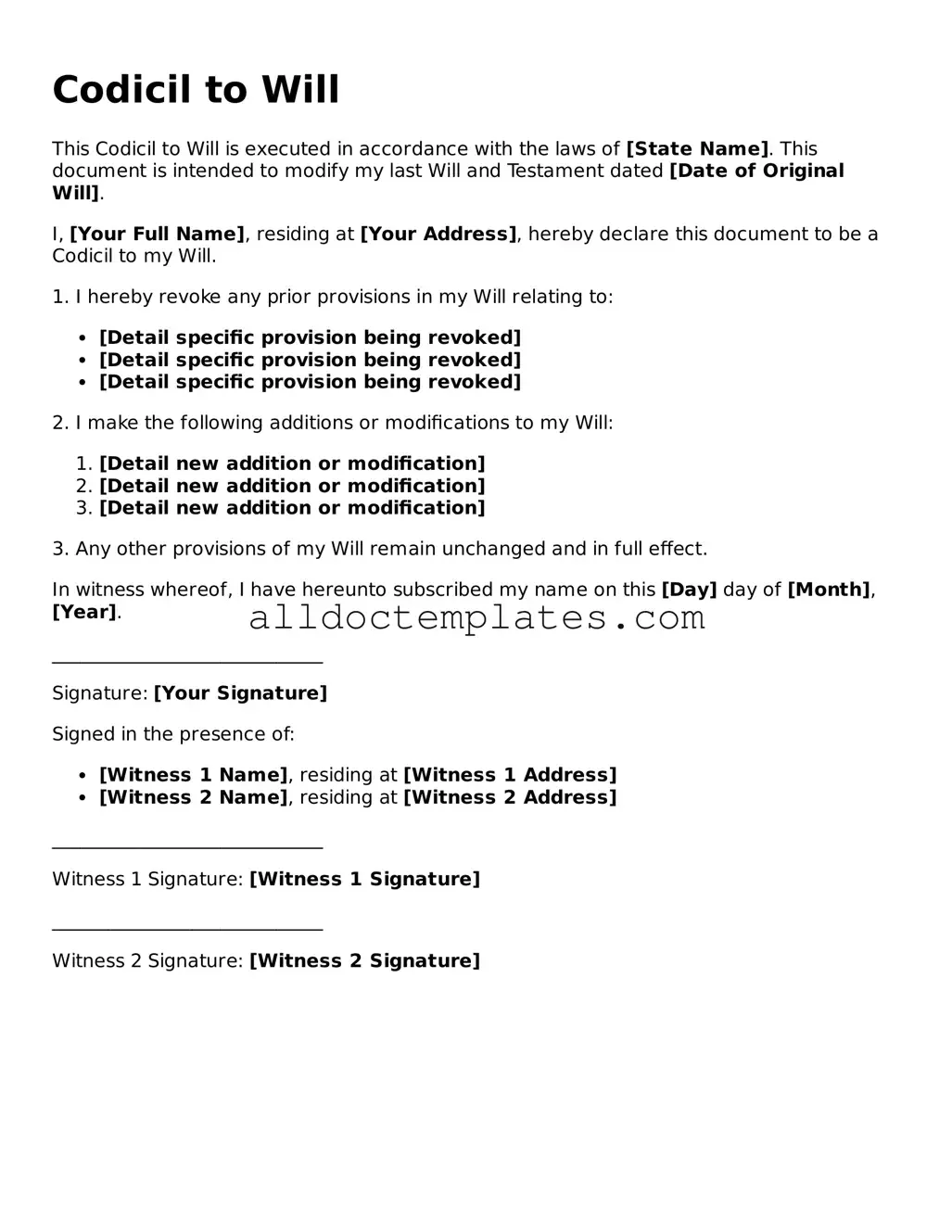Codicil to Will
This Codicil to Will is executed in accordance with the laws of [State Name]. This document is intended to modify my last Will and Testament dated [Date of Original Will].
I, [Your Full Name], residing at [Your Address], hereby declare this document to be a Codicil to my Will.
1. I hereby revoke any prior provisions in my Will relating to:
- [Detail specific provision being revoked]
- [Detail specific provision being revoked]
- [Detail specific provision being revoked]
2. I make the following additions or modifications to my Will:
- [Detail new addition or modification]
- [Detail new addition or modification]
- [Detail new addition or modification]
3. Any other provisions of my Will remain unchanged and in full effect.
In witness whereof, I have hereunto subscribed my name on this [Day] day of [Month], [Year].
_____________________________
Signature: [Your Signature]
Signed in the presence of:
- [Witness 1 Name], residing at [Witness 1 Address]
- [Witness 2 Name], residing at [Witness 2 Address]
_____________________________
Witness 1 Signature: [Witness 1 Signature]
_____________________________
Witness 2 Signature: [Witness 2 Signature]
